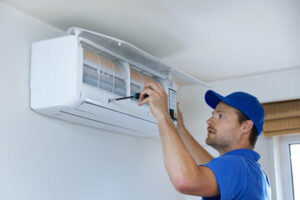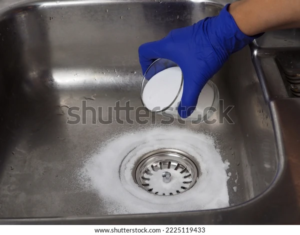Lip fillers are a safe and effective treatment for increasing lip volume. Typically made with hyaluronic acid (HA), they are injected into the soft tissue of the lips to create a fuller, more structured and symmetrical look.

A defining feature of lip fillers is that they are reversible with an enzyme called hyaluronidase. However, the benefits of a lip filler are long-lasting. Click https://houseofaesthetix.com/ to know more.
Personalized Treatment
A key to getting the most natural results from lip fillers is working with an experienced nurse injector, physician assistant, or board-certified plastic surgeon. With this skill, you can get your desired lip shape and volume without the risk of looking overdone or fake. With the right practitioner, you can also avoid the most common side effects of this treatment such as bruising and swelling.
Unlike the collagen and silicone injections of the past, the modern hyaluronic acid fillers used in lip fillers offer greater control over the amount of filler added to the lips. This allows the lip filler to support the natural tissues of the mouth and enhance its shape rather than simply adding bulk. The advanced techniques that practitioners use to deliver these treatments also help ensure a more subtle and refined outcome, with less of a “duck lip” appearance.
As part of a balanced facial aesthetic, natural-looking results for lip fillers require that the enhancement is proportionate and fits the patient’s unique lip shape and facial features. The latest techniques involve a gradual buildup of the lip, with patients receiving multiple appointments to achieve the desired results. This allows the filler to be blended seamlessly into the natural lip structure and prevents a frozen, unnatural-looking result.
A highly trained injector will not only notice if your lips are small or large, thick or thin, but will observe the intricate underlying anatomy of your lips and how they move as you speak or smile. This anatomical knowledge translates into knowing exactly where and how much to inject in order to achieve your goals. It also reduces the risk of a lumpy or “duck lip” appearance as well as preventing lip fillers from being injected into blood vessels and other areas that could cause complications like infection or occlusion.
In addition, a professional will be able to advise you on pre-treatment preparation, such as avoiding certain medications and supplements that may increase the likelihood of bleeding during the procedure. They will also provide detailed post-treatment instructions to minimize bruising and swelling, including advising you on how to massage your lips gently to distribute the filler evenly and prevent blotching and unevenness.
Minimal Pain
As with most injection treatments, the amount of pain incurred can vary depending on an individual’s tolerance. In general though, the lip filler procedure is relatively comfortable. The reason for this is that lip fillers are typically injected using an ultra fine needle. This needle is much thinner than the needles used in collagen filler procedures of the past, which had to be larger because the product had a higher viscosity. Besides, the majority of injectables contain lidocaine which is a numbing agent that makes treatment more pleasant.
As for bruising, it is a possibility but one that can be minimized by choosing a practitioner who has experience administering dermal fillers. Also, it’s important to make sure the filler you choose is FDA approved. If your practitioner claims to use a product that is not FDA approved, it’s best to walk away and seek another practitioner’s services elsewhere.
Other than that, bruising isn’t very common with lip fillers, especially when the procedure is done by an experienced practitioner. If it does occur, it’s best to take over-the-counter ibuprofen to relieve any discomfort. Swelling is also possible, but it should subside within 24 hours and should be easily treated with an ice pack.
While the initial injection can be somewhat uncomfortable, most clients say that it’s similar to a quick pinch in the beginning when the needle first pierces your lips. Afterwards, the feeling goes away quite quickly and most clients find the results worth any slight inconvenience.
The good news is that hyaluronic acid fillers have very little side effects and do not have the same long recovery periods that other cosmetic surgery options do. Nevertheless, it’s always a great idea to consult with an experienced practitioner and ask for before-and-after pictures of past clients before getting any type of injection. Also, try to avoid taking any supplements or medications that have a blood-thinning effect as these can increase swelling and bruising. Lastly, try to stay away from alcohol as it can exacerbate any redness and bleeding from the procedure. Also, avoid doing strenuous exercise for 48 hours after your appointment as this will increase your heart rate and blood pressure, causing any swelling or bruising to be more pronounced.
Short Recovery
Lip fillers can be a great option to create fuller lips, and many patients are happy with the results. However, the biggest benefit is the short recovery time compared to other cosmetic procedures. The treatment only takes a few hours and patients can return to work or other activities almost immediately.
During the first 24-48 hours following the procedure, your lips will be very swollen and sensitive. You may also experience pain, redness and light bruising, which is normal. To minimize these symptoms, it is recommended that you apply ice packs several times a day to reduce swelling and pain. You should avoid kissing or applying pressure to the area, as this can make the swelling worse.
After a few days, the swelling should begin to decrease, and your lips will start to look and feel more natural. At this point, you can resume light activities, such as eating and drinking. However, it is recommended that you avoid hot showers, steam rooms and saunas, as they can increase the swelling. It is also a good idea to avoid rubbing the area, as this can cause the filler to move or disperse.
In addition to enhancing your natural lip shape, lip fillers can also help correct some facial imperfections. For instance, some people have thin lips, which can affect the symmetry of their face and cause it to appear less balanced. Adding volume with lip fillers can improve this issue and restore a more balanced appearance to the face.
Another common problem that can be solved with lip fillers is fine lines around the mouth. These can be caused by aging or by smoking, but they are easily treated with fillers. The hyaluronic acid used in the fillers will smooth out these fine lines, making your lips look younger and healthier.
Lastly, some people have asymmetrical lips, where the border of one side is much thinner than the other. Adding volume with lip fillers can help balance this issue and give the upper lip more prominence. In general, using lip fillers can enhance your appearance and make you feel more confident. However, it is important to be realistic about your expectations and only seek treatment from a trained provider.
Natural Results
Lip fillers enhance your natural features and can help to define the pink areas of your lips while blurring fine vertical lines that wrap around your mouth. Using dermal fillers such as Restylane Kysse or Juvederm Volbella, our team will add volume where needed to achieve a naturally enhanced appearance.
The results from lip fillers are long-lasting. Depending on the type of filler used, your injector can schedule follow-up appointments every six months to a year to maintain your results. However, you can also choose to have touch-up treatments sooner if desired.
A customized treatment plan can ensure that your lip enhancement aligns with your facial structure and aesthetic goals. It will also ensure that the amount of filler used is appropriate for your unique facial anatomy.
When you choose a skilled provider, the outcome will be natural and balanced, not puffy and overdone. This is why it’s important to find an expert injector who has experience and a keen eye for detail. A good injector will also understand that it’s best to start with a conservative approach and gradually enhance your lips.
Many of our patients come in complaining that lipstick no longer stays on their lips due to thin lips. Whether this is due to age, or genetics, dermal fillers can be very effective at creating a more defined vermilion border. This helps to create a sharper lip line that keeps lipstick in place and doesn’t bleed into the surrounding skin.
Lip fillers are made of hyaluronic acid (HA), which is a natural sugar that occurs in your body. This gel-like substance is safe to use and does not require allergy testing. Injections are painless and do not leave any scars. The only downside to using fillers is that they are not permanent, and will eventually break down. That’s why it is important to visit an experienced and reputable provider who will perform regular touch-up sessions as needed.








